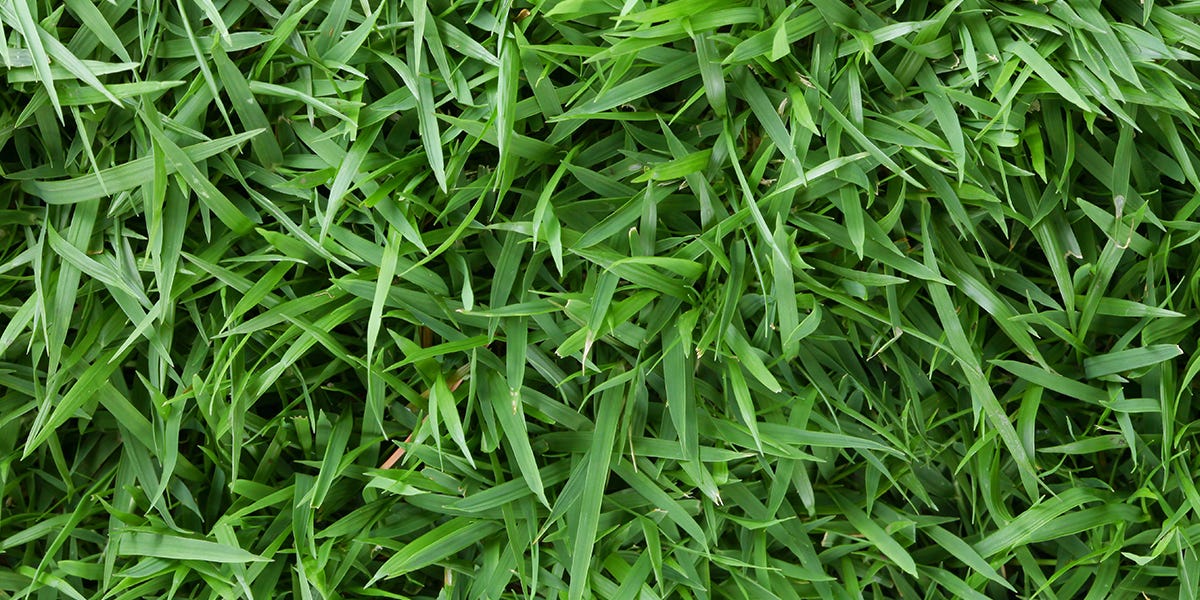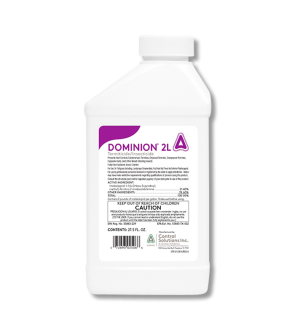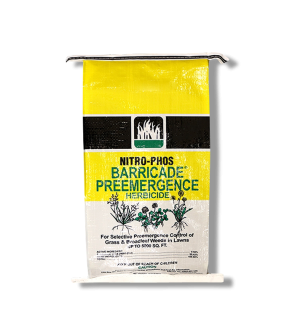Gain access to personalized product screening, the best pricing, rewards, and more!
Most Effective Products
Zoysia Grass Control: How to Maintain Zoysia Grass Yearly
This article is a general yearly maintenance guide for Zoysia Grass. Using the suggested products or methods can help you control your lawn. Follow this guide and use the recommended products and methods, and we guarantee complete improvement within your Zoysia Grass.
A warm-seasoned grass like Zoysia is primarily found in the transitional zones of the United States (Northern Georgia to Southern Illinois). Zoysia grass grows above the ground through stolons and below the ground through rhizomes, contributing to its dense growth pattern. Its dense vegetation makes it withstand cold temperatures and withhold water in its roots for long periods of dormancy or drought.
However, it should be noted that as a warm-seasoned grass, it will still become dormant in cooler temperatures but will awaken out of dormancy faster than other grass species. Due to these factors, Zoysia grass is a popular choice in these regions.
Zoysia grass maintenance differs from other types of warm-seasoned grass since it can withstand shade and cold. This can also be seen in its growth pattern, which is relatively slower than that of other species of grass. This means less mowing in your lawn care schedule. Once established, Zoysia grass is low maintenance in mowing and watering.
In addition, its dense vegetation helps to resist weed invasion and foot traffic stress. Although Zoysia grass is extremely tolerant of most scenarios and soil conditions, it is not as tolerant of salt as Bermuda Grass. Compared to Zoysia grass, Bermuda grass can be an invasive weed.
If you live in a suitable climate zone, Zoysia grass can be a beneficial turf for your lawn. By following our DIY yearly Zoysia grass guide, you can learn how to care for your turf throughout the year through an appropriate time schedule and increase your turf's appearance at a cost-efficient price. If you want to discuss Zoysia grass further, please do not hesitate to contact our team by phone or email.
Identification

The first step in any lawn control plan is to properly identify the turf. Misidentification can lead to using the wrong herbicides, which can be a waste of time and money.
- Zoysia grass blades are narrow to medium wide. Their blades are light to medium green in color.
- The blades of Zoysia grass are stiff with sharp points.
- Located in the transition and northern region of the United States.
- As a warm-seasoned grass, it prefers sun but can tolerate heat, drought, shade, and some cold.
- The growth rate is slow, but once established, it forms a dense mat-like covering.
- Tolerate a wide variety of soils like sand and clay.
- Zoysia grass grows through two horizontal stems known as stolons and rhizomes. The stolons creep along the surface of the soil in a horizontal pattern, planting roots every few inches. The rhizomes grow about 4 to 5 inches below the surface of the soil, allowing Zoysia greater access to water than other plant species.
- Zoysia's grass blades will have fine hairs near the top.
Use the image and description above to help you properly identify Zoysia grass. If you are still unsure, contact us and provide a photo of your turf so we can better assist you with proper identification.
Inspection

Once you have properly identified Zoysia grass, you will need to inspect it to see where it is growing and the present condition of your turf. This will help you determine where to apply your herbicide applications.
Where to Inspect
Zoysia grass has a slow establishment rate compared to other warm-seasoned grass species. For this reason, the best time to inspect your lawn for Zoysia is at least several weeks into the spring season. During active growth, Zoysia grass can be found across your yard in a dense mat-like covering, including shaded areas underneath trees or ornamental plants.
What to Look For
Thick, dense carpets of grass spread horizontally across your lawn, including underneath trees and ornamental plants. During periods of cooler weather, Zoysia grass will resemble the texture, color, and shape of straw.
Treatment
Before handling any pesticide, it is recommended that you wear the appropriate personal protective equipment (PPE) to prevent the pesticides or chemicals from coming into contact with your hands, mouth, face, eyes, and feet.
We recommend beginning in mid-February, just as Zoysia grass awakens from dormancy. Normally, this is not recommendable with other grass species, but due to the slow growth pattern of Zoysia, it is susceptible.
Step 1: Apply Pre-Emergent Weed Control in Mid-February

Apply a pre-emergent herbicide within the last two weeks of February to deter weeds from germinating underneath your turf. We recommend Barricade Granular Pre-Emergent Herbicide, which contains prodiamine, an active ingredient that effectively controls undesired seed growth and emergence in the soil.
It should be noted that pre-emergent herbicides can be liquid, water-soluble, or granular. Since Barricade is a granular herbicide, it will be applied using a push or hand spreader.
Removing weeds germinating underneath your Zoysia grass can help increase its growth rate. Ideally, this is beneficial since Zoysia is a slow-growing foliage plant. Without a pre-emergent herbicide, the time it takes for your Zoysia to become established will be prolonged.
Determine how much Barricade to use by measuring your treatment area's square footage. To find this, you will need to measure the treatment areas' length and width in feet, then multiply them together (length X width = square footage).
An application of 4 lbs. per 1,000 sq. ft. is the standard rate for Zoysia Grass.
However, you will still need to load the appropriate amount of Barricade into a hand or push spreader. We recommend a push spreader for large-scale applications.
Once your selected spreader is loaded, walk a straight horizontal line back and forth across your property, beginning in the corner. After application, water the granules with at least 0.5 inches of water to activate them.
Step 2: Water Lawn Consistently Throughout Year
The deep root system of Zoysia grass allows watering to be conducted as needed, but like other species of grass, it can still benefit from 1 inch of water per week.
If there is not enough time during the week, deep watering would benefit your lawn. Either method, you will want to water your turf early in the morning to avoid moisture evaporation from excessive heat. When watered late in the evening, your Zoysia grass becomes susceptible to fungi and other diseases.
Avoid excessive watering when you see pools of water on your turf or if there has been frequent rainfall.
Step 3: Mow in March and As Needed in the Following Months
Consistently mowing Zoysia grass is of little concern due to its slow growth rate, but it will still require occasional maintenance.
Once Zoysia grass has fully awakened from dormancy in March and exceeds a height of 3 inches, you can begin to mow. Due to the dense foliage coverage, there is some flexibility with the mowing height, but the general rule is to remove no more than one-third of the leaf blades.
Due to the stiffness of Zoysia grass blades, your mower blades may need to be continuously sharpened throughout the season.
Step 4: Dethatch Turf in April
During April, you will begin to see bundles of grass clippings, dead leaves, and roots known as thatch. Once you see thatch collecting on your turf, you must dethatch your lawn with a dethatching rake.
However, it may be hard to differentiate between thatch and healthy Zoysia grass since it typically grows in thick vegetation. The best way to avoid unnecessarily pulling healthy Zoysia grass is to rake when the thatch layer exceeds 1 inch. Since Zoysia grass has dense foliage, it will produce thicker thatches than other species of grass, making it all right to leave a thatch layer smaller than 1 inch on your turf.
When Zoysia grass is left with a thatch layer greater than these dimensions, it can lead to serious issues within your turf, such as root suffocation. Additionally, as Zoysia grass reseeds itself, it may grow in the thatch layer rather than the soil. This can lead to issues of barren turf, as the seeds can be easily carried off by wind or water erosion.
Step 5: Fertilize in May and August
Zoysia grass will need at least two fertilizer applications each year, the first late into the spring season (May) and the second in late fall (August to September).
For May, you will want to apply a summer fertilizer since it is closer to the summer months. It will provide essential nutrients for summer lawns like Zoysia without excessive growth. A pre-emergent spring fertilizer is not recommended since it will promote excessive growth, which you want to avoid with thick vegetation like Zoysia.
While it is possible to apply fertilizers as late as September, we do not highly encourage it. Zoysia grass will go into dormancy sooner than other species of warm-seasoned grass. If applied in September, you risk your turf going into dormancy later than normal, which can cause permanent damage the following season.
You must select a fertilizer with no more than 4 lbs. of nitrogen because Zoysia Grass can only receive between 2 to 4 lbs. of nitrogen per 1,000 sq. ft.
To determine the amount of nutrients needed in your lawn, you will need to perform a pH test. This can be done through your local extension office, governed by the National Pesticide Information Center, or a pH meter.
Once you have applied the appropriate fertilizer, you must activate it with at least an inch of water. Wait at least two days after application to apply water.
Step 6: Apply Insecticide Product in June
Zoysia grass is most active during summer, so it is more susceptible to pest damage, such as grubs or aphids.
To remove pests such as aphids, grubs, and a wide variety of insects, we recommend using Dominion 2L during the month of June. Dominion 2L is a recommendable product that treats a wide variety of insect species and leaves a residual barrier for up to 90 days. It effectively eliminates insects and protects your Zoysia turf for up to 3 months.
A general pest application will be 0.46 to 0.6 fl. oz. of Dominion 2L per 1,000 sq. ft.
You must use either a handheld pump or a backpack sprayer to apply this product.
Once you have the appropriate amount of Dominion 2L mixed in your selected sprayer, apply the product in a sweeping back-and-forth motion to evenly coat your turf. Make sure to spray the top and underside of the leaves to ensure a uniform application. After treating your property, you will need to treat the perimeter of your home.
Spray 3 feet up and 3 feet out from the home's foundation. This application is necessary because pests will escape your treated Zoysia turf by entering your home.
Key Takeaways
What Category Does Zoysia Grass Fall Under?
- Zoysia Grass is a warm-seasoned lawn location in the transition and northern region of the United States.
When to Begin Yearly Maintenance for Zoysia Grass?
- Zoysia Grass treatment will begin in mid-February and end in August or September, with only some watering during the winter months.
What Products to Use for Zoysia Grass?
- Dominion, Barricade, and summer and fall fertilizers containing no more than 4 lbs. of nitrogen will be recommended products for Zoysia.












